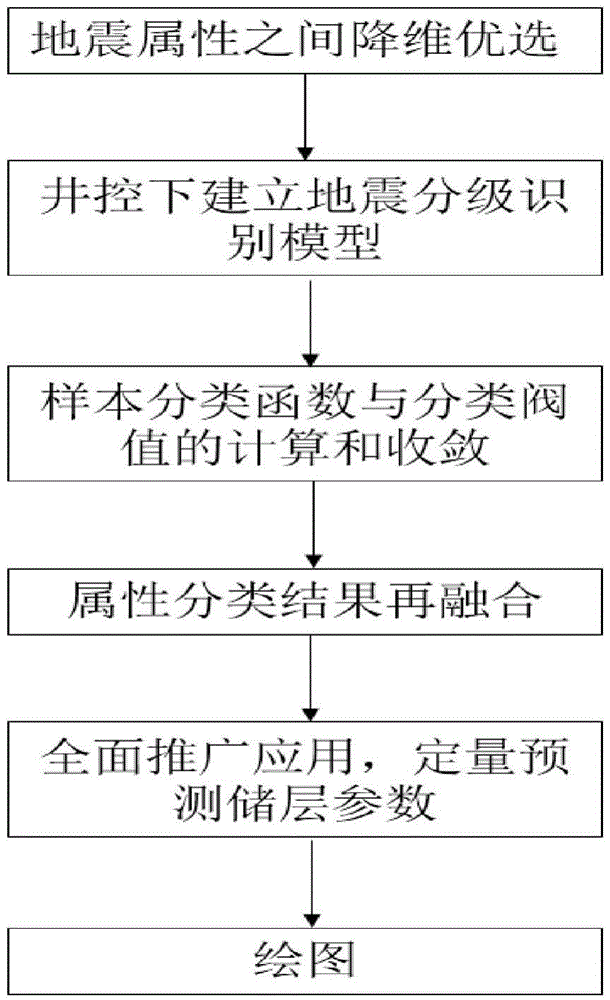Deep thin interbedded reservoir quantitative characterization method based on seismic grading sensitive attribute fusion
A technology of sensitive attributes and quantitative characterization, applied in the field of geophysical exploration and comprehensive research, can solve the problems of low prediction accuracy of deep and thin interbedded reservoirs, and achieve the effect of avoiding multiple solutions, accurate prediction results and high coincidence
- Summary
- Abstract
- Description
- Claims
- Application Information
AI Technical Summary
Problems solved by technology
Method used
Image
Examples
Embodiment Construction
[0033] Hereinafter, preferred embodiments are enumerated and described in detail in conjunction with the accompanying drawings.
[0034] The quantitative characterization method of deep thin mutual reservoirs based on the fusion of seismic classification sensitive attributes, the specific implementation process is as follows:
[0035] 1. Combined with the sedimentary background of the high-frequency sequence division of well seismic, the multi-attribute correlation dimensionality reduction of conventional seismic and the attribute optimization of the target interval are carried out. Complete the conventional multi-attribute fusion map to predict the deep thin mutual reservoir.
[0036] 2. On the basis of conventional multi-attribute predicted reservoirs, the reservoirs in the whole area are graded. In large-scale and large-scale areas, the occurrence of reservoirs varies greatly, and the prediction of large time windows cannot meet the fine carving of small-scale sand bodies....
PUM
 Login to View More
Login to View More Abstract
Description
Claims
Application Information
 Login to View More
Login to View More - R&D
- Intellectual Property
- Life Sciences
- Materials
- Tech Scout
- Unparalleled Data Quality
- Higher Quality Content
- 60% Fewer Hallucinations
Browse by: Latest US Patents, China's latest patents, Technical Efficacy Thesaurus, Application Domain, Technology Topic, Popular Technical Reports.
© 2025 PatSnap. All rights reserved.Legal|Privacy policy|Modern Slavery Act Transparency Statement|Sitemap|About US| Contact US: help@patsnap.com



